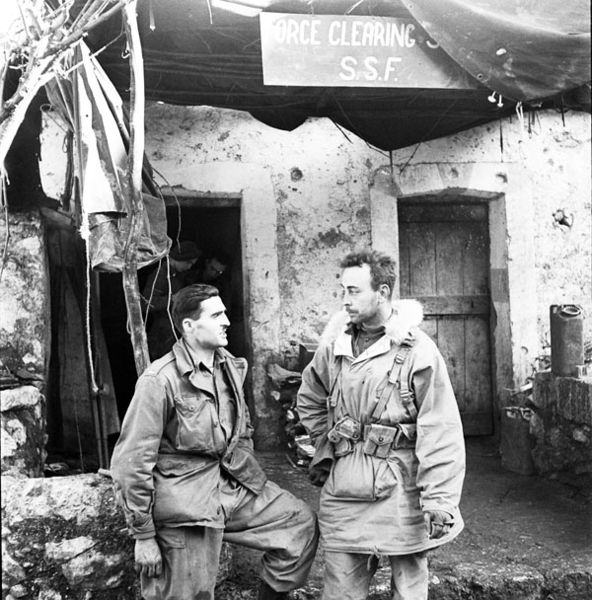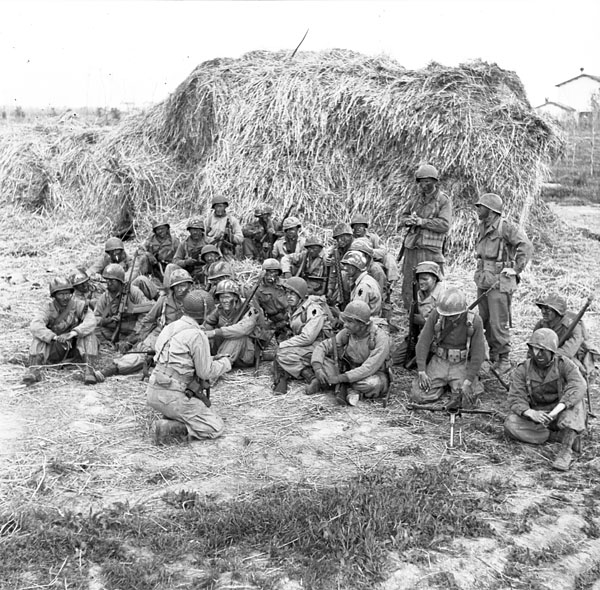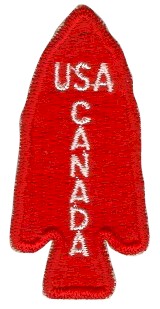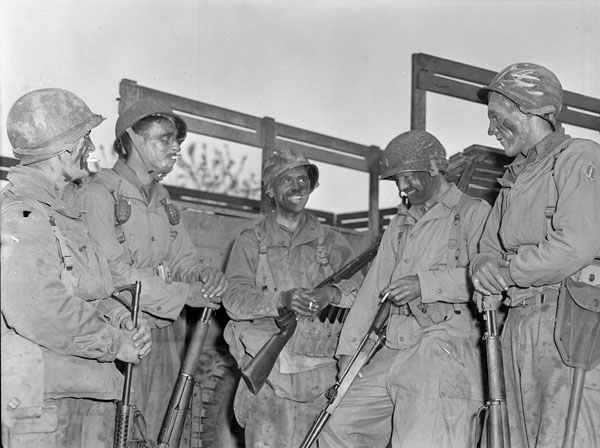Forcemen of 5-2, First Special Service Force, preparing to go on an evening patrol in the Anzio beachhead, Operation Shingle, Italy, ca. 20-27 April 1944. Library and Archives Canada
William “Bill” Rachui was an 18 year-old farm boy from Texas who was looking for excitement in his life. He was third-generation American, his grandfather being a German migrant. The excitement he craved came in 1940 when WWII broke out; Rachui decided that his destiny lay with the United States Cavalry. The horse hadn’t yet gone out of style as the war broke out; Rachui spent his first few months as a saddler, whose duties were to tend to the leather to ensure all the saddles were battle-ready.
The young man was nothing if not opportunistic, so when he learned that the government was forming a new special unit in 1942 he was among the first to enlist. Despite heart-felt objections from his mother, Rachui was soon training in Fort Harrison near Helena, Montana.
The First Special Service Force, as it was called, was one of the first international units created. Originally numbering 1,800 Canadians and Americans working side by side, the unit was to ensure that the Germans knew their name. The goal of the unit was to sabotage Germany’s war industry by targeting power plants and industrial installations.
The First Special Service Force served all around the world. Their initial assignment was to assist in pushing the Japanese out of the Aleutian Islands off of Alaska. The unit arrived too late to make the Japanese pay, but they were soon given their first taste of real combat in December 1943.

German forces were holding the Monte la Difensa as a stronghold against the Allied advance. The FSSF approached the enemy from the rear by routing a steep climb up a supposedly insurmountable slope and defeating the defenders during a nighttime raid. Rachui’s role was as supply mule for the attacking force, and he ended up having to be treated for frostbite on his feet.
In February of 1944 Rachui and his comrades were sent to Anzio. There they conducted dozens of nighttime raids on the Nazi forces, which earned them the name ‘the Black Devils’ by their Nazi and Italian opponents. They gained this designation from their night attacks and from the charcoal they applied to their skin to reduce visibility. It was these attacks that would eventually help to secure the First Special Service Force a position as one of the lead units to march into a liberated Rome.
The FSSF soldiers had to be powerhouses; they carried no less than sixty pounds of equipment. Most had an M1 rifle and a pistol, while some substituted the M1 for a submachine gun. They also carried a very special knife as well, the V-42 stiletto, which was specifically made for them. Some, like Rachui, also spoke German, which made them all the more capable in dealing with Germans.

Much of the original 1,800-man command didn’t survive the two years of its existence. In fact, by the time they were disbanded the command had suffered 2,314 losses, far more than the original number. By December 1944, the Allied High Command saw no need for these throat-cutting, facility-bombing soldiers, and the unit was disbanded. Thankful to get out of combat, Rachui joined the 474th Infantry Regiment in Norway, which was assigned to guard prisoners.

During the war, Rachui witnessed a lot of death and experienced personal physical hardships. What kept him going was the thought of his people back home. One in particular who buoyed his flagging spirits was Eva Mae Gaskamp, who had been a schoolmate of his before the war. After the war ended this friendship blossomed into a romance, resulting in a marriage and a family with two sons and a daughter, the News and Record reports.
Rachui’s services in the war proved useful to him later. After going through several jobs, Rachui returned to the military as a commissioned officer in the reserve forces. His military career ended with an honorable retirement in 1966, after which he took up a new career as an executive of the Boy Scouts of America in the Winston-Salem area. Later, he ran an antiques business in Waynesville for ten years.
Every year, even after his wife’s death, he has made it to the yearly reunion of the Special Service Force. His service was honored on February 3, 2015 when he and the survivors of the Force gathered in Washington D.C. They were honored for being one of the few units who never failed a single mission; impressively, they were awarded a combined thirteen US campaign stars and Canadian battle honors.
